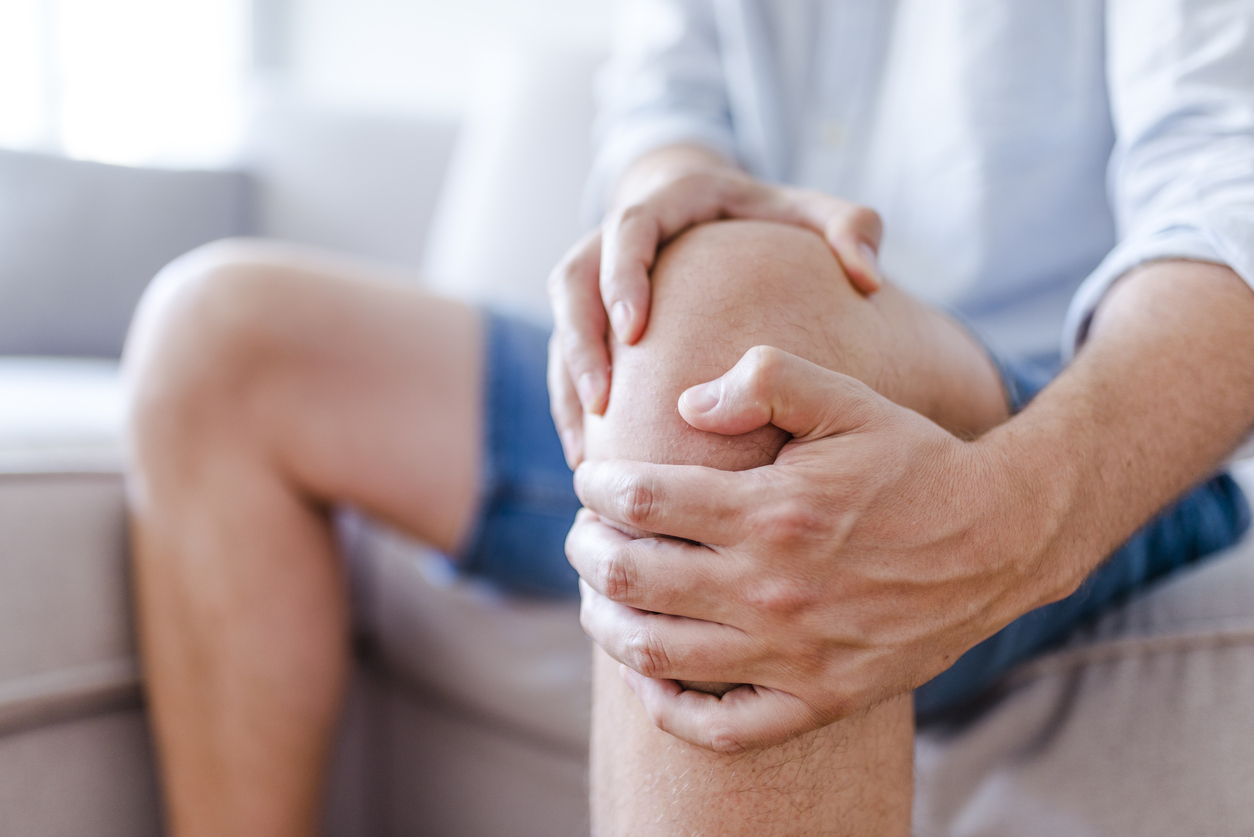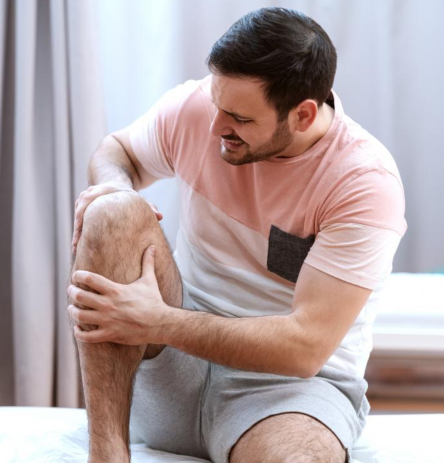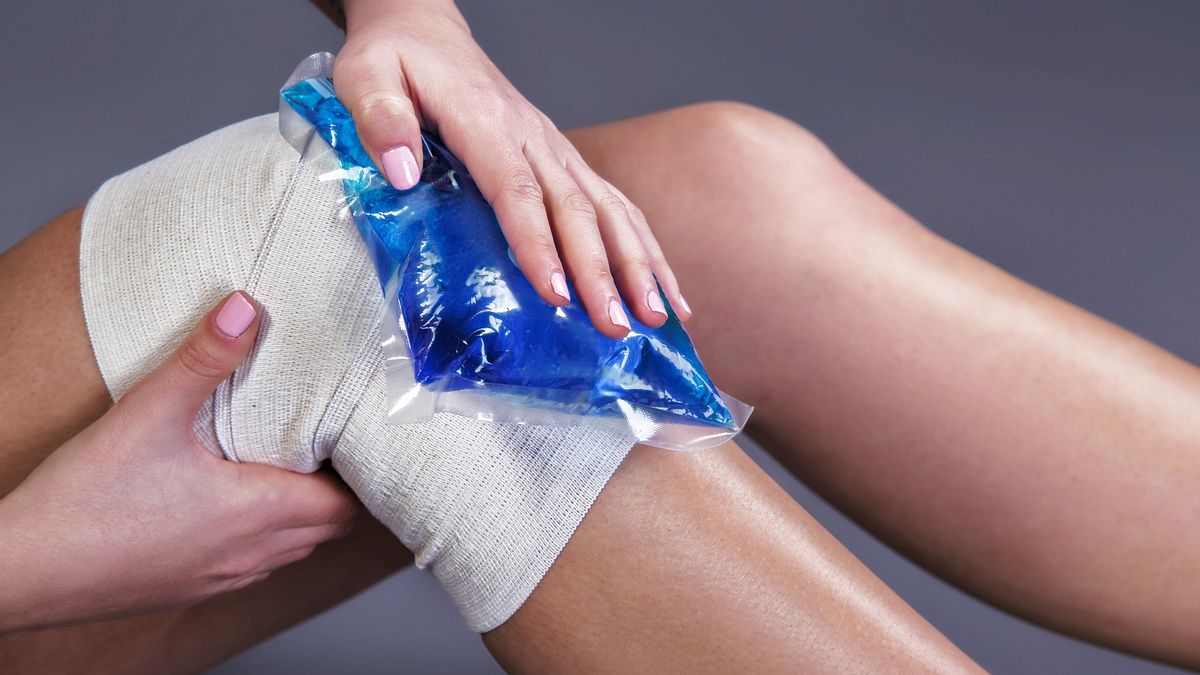Having a knee condition can seriously interfere with your life. If you are in constant pain whenever you walk or bend down, you will likely find it very difficult to get around. As with any sort of pain the body experiences, there can be multiple reasons as to why you experience this pain. Additionally, each cause will come with its own type of treatment, and some people may just need extra treatment than others. Factors like age and weight can both add pressure to the knees and can end up making them feel worse. Within this article, we will go over a few different knee conditions and talk about the different treatments for each condition.
Sprain

source: pinterest.com
One reason why you could be experiencing knee pain is that you have sustained a sprain. A sprained knee can occur for a number of reasons, but often it can happen after exercise. Overstretching or overusing the knee can both result in a sprain, which can lead you to struggle with walking or bending your knee. Your knee will likely feel tender, and it may also look swollen or bruised. You will likely find that you experience the most pain when you try to put weight on your knee, which is why it is recommended to rest until your knee starts to feel better. Additionally, to help with the swelling, it is advised that you apply ice to the area to soothe some of the pain. Keeping the knee elevated and compressed will also help with healing the sprain.
Rheumatoid Arthritis
Rheumatoid arthritis is another condition that can cause serious knee pain. The pain experienced from this condition is found within the joints and it can be extremely difficult to move around. Some of the most common places one can experience rheumatoid arthritis are in the knees, wrists, hands, and hips. Painful swelling and immobility will both come with rheumatoid arthritis, and it can also affect other parts of the body too. While it is unclear what exactly causes rheumatoid arthritis, it is commonly thought that genetics plays a huge part in the development of this condition.
In terms of treatment, pain killers and anti-inflammatory drugs can both help to manage your pain and reduce inflammation. However, in more serious cases, sometimes knee surgery is the only option. Your knee surgeon will perform a total knee replacement surgery, which hopefully should allow you to gain your mobility back.
Dislocated Knee

source: advancedsportsandspine.com
Another reason why you could be experiencing pain is that you have dislocated your knee. A dislocated knee is often an injury that is sustained during exercise, and it can cause the individual extreme pain. It occurs when the bone is not and subsequently slips out of the joint. Experiencing a dislocation is not something that can be mistaken as you can often see the dislocation on the surface of the skin. A dislocated knee is a very serious injury, and it will require immediate treatment. In terms of what sort of treatment, you would receive, the severity of the injury will determine this. A dislocated knee will most likely require some sort of surgery so that the knee can be pushed back into the correct position. Once someone has been through the surgery, they will require some physiotherapy for a good few weeks, just so the knee can fully recover.
Tendonitis

source: pinterest.com
As the name suggests tendonitis is a condition that occurs when the tendon sustains an injury, leading to the tendon swelling. This sort of injury causes the tendon to become seriously inflamed and tender, which can leave people unable to move their bodies. Damaging a tendon around your knee can cause your knee joint to become stiff and painful and you may also find it becomes a little hot to the touch. Luckily, in mild cases of tendonitis, you can treat it yourself at home. The first thing you need to do is rest and avoid moving the tendon for at least two days. You also need to support the injury either some sort of bandage or a soft brace. If you are unsure what you need, then contact your local pharmacy and get a recommendation from them.
Summary
When it comes to knee pain, it is clear that there are multiple conditions which can affect how you move. In some cases, knee pain can be something simple like a sprain that just needs to be rested and then in other cases you may require surgery to fix the injury. It is important to recognise these different signs and symptoms as you need to be aware when something is serious. As you get older you may find that you experience pain more frequently, so just watch out for any unusual knee pain. As always, if you are finding it hard to move or the pain is unbearable, then you need to consult with your doctor.





